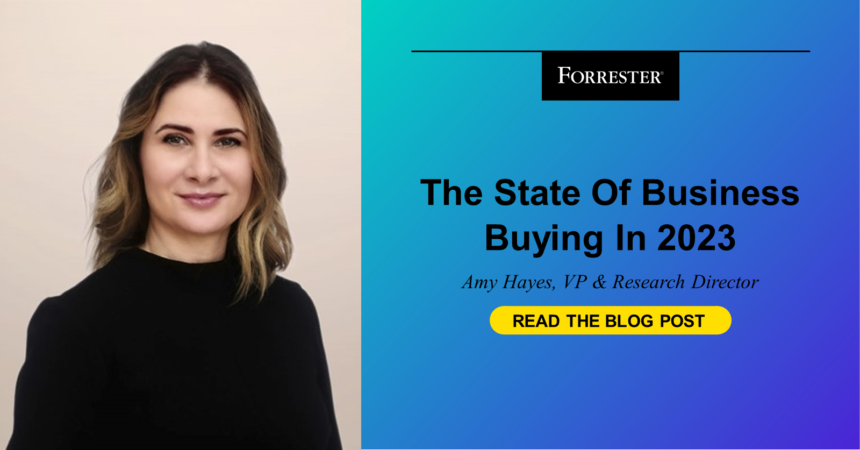In 2023, business buyers around the world are overwhelmingly price-sensitive as they navigate macroeconomic headwinds such as inflation, the lingering effects of the COVID-19 pandemic, and a generational shift in the workforce. To understand how these factors affect business buying behavior, Forrester surveyed more than 18,000 global respondents to glean their latest preferences. The 2023 survey results, highlighted in our new report, The State Of Business Buying, 2023 (client access only), exposed four areas that impacted businesses’ purchases:
- Financial constraints. The gap between budgets and offering prices contributed to a stalled business buying environment, with a whopping 89% of respondents citing one or more stall reasons. This dynamic translated into price topping buyers’ list of most important information in their journey, indicating that they are thinking less about abstract business concerns such as how an offering may fit with future industry trends. Instead, those issues are taking a back seat to questions typically seen in the later stages of the buying cycle.
- Vendor-owned interactions. Buyers derived more meaning from vendors than they did from other sources. Specifically, product experts rose as the most influential people in the buying cycle, adding clarity and value as buyers sifted through mounds of information. Buyers also gravitated to sales representatives and customer service/success teams. These three players, all vendor-owned and orchestrated, must work together to address how their offerings best meet buyer needs and drive growth. When it comes to content, vendor presentations topped the list for buyer influence in complex purchases.
- Generational differences. Last year marked an inflection point in the way younger and older buyers journeyed through their business decisions. In this year’s survey, 71% of respondents were categorized as “younger buyers,” as they fall within the Millennial and Generation Z cohorts, followed by 29% of respondents who were categorized as “older buyers,” from Generation X and Baby Boomer cohorts. Older buyers are twice as likely to identify previous experience with a provider as a primary trigger for reaching out to one for information than younger buyers. Tenure and experience played a role in how buyers navigated various challenges in the buying cycle, particularly at the executive level. For example, younger buyers cited “unable to build internal consensus on vendor selection” as a stall reason much more frequently than older buyers.
- Regional practices. Forrester data confirms regional differences in buying patterns across the globe but particularly in the Asia Pacific region, where buyers rely on trust and relationships with vendors to make purchase decisions. We see an emerging importance of social issues throughout the buying journey, however. Asia Pacific buyers are more influenced by a provider’s commitment to people, whether through diversity, equity, and inclusion programs; sustainability initiatives; or overall customer experience. Turning to North America, buyers were more autonomous and made decisions with fewer people across fewer departments than the rest of the world.
Forrester clients can access the full report here. This is the first in a series of buyer insight reports that will be published between now and the end of the year. The series is designed to help B2B sales and marketing leaders better understand what drives buyers and how they travel through their purchase journey. Each report showcases a specific region, persona, or industry to help providers make data-informed decisions about campaigns, programs, content assets, and messaging.
Contact your customer success manager to schedule an inquiry or submit a request here.








